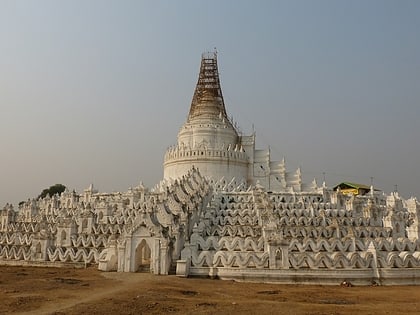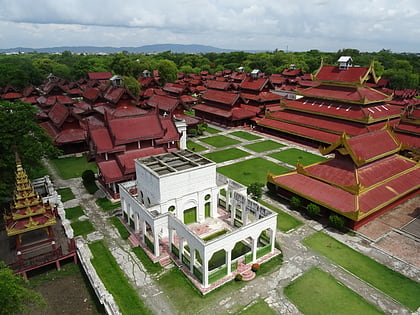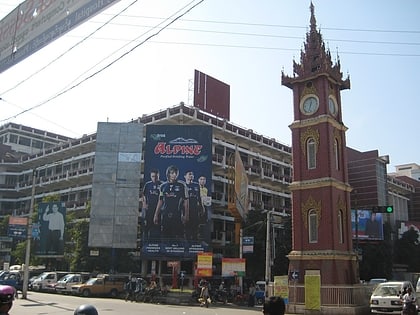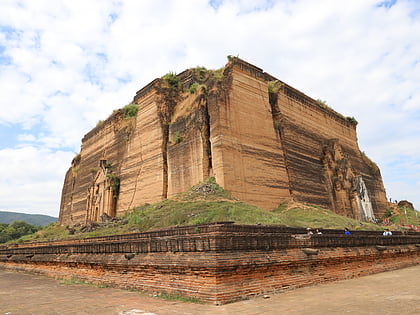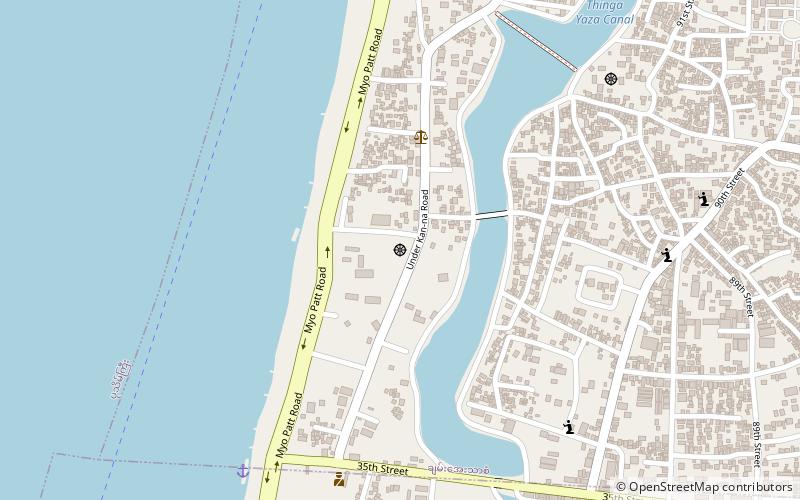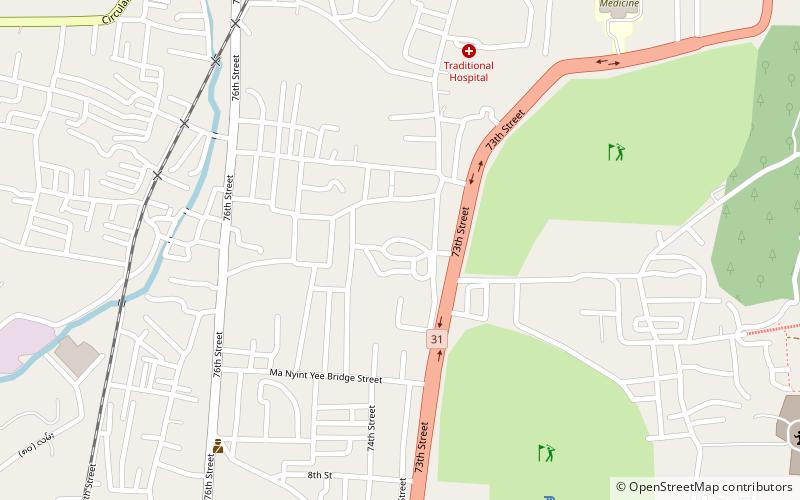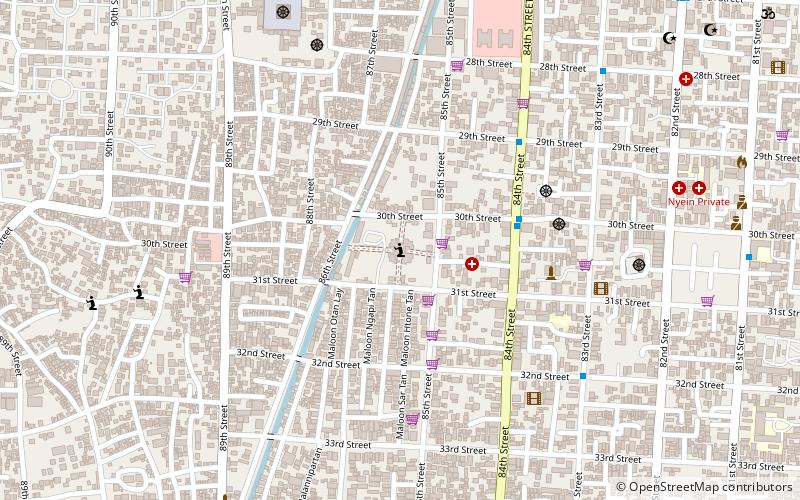Hsinbyume Pagoda, Mandalay
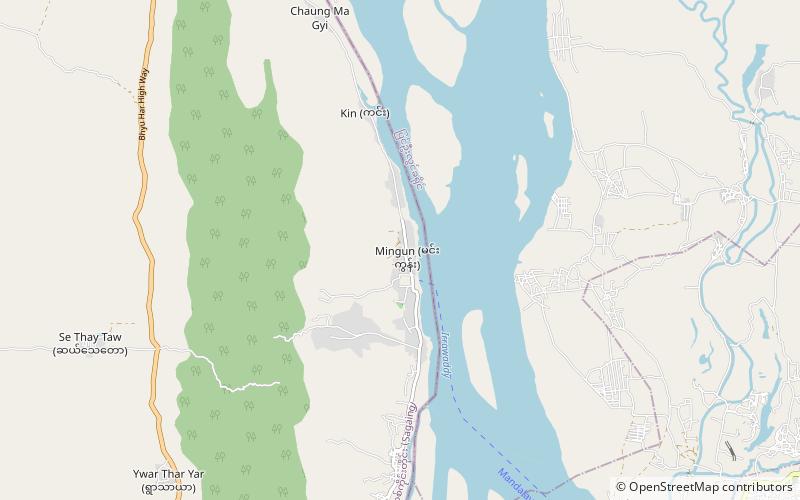
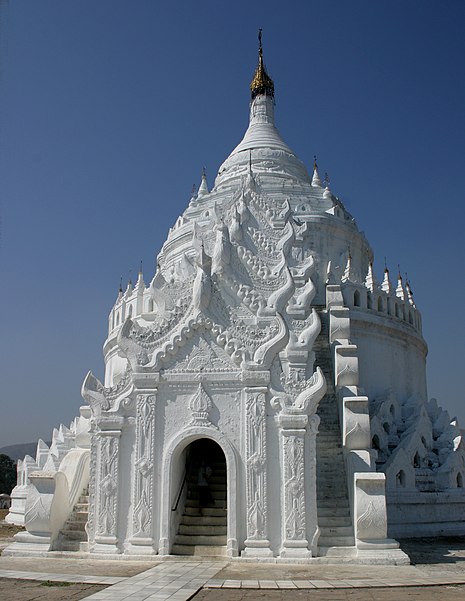
Facts and practical information
Nestled on the western banks of the Irrawaddy River, the Hsinbyume Pagoda stands as an architectural marvel in the city of Mandalay, Myanmar. This striking white temple, built in 1816, is a representation of the mythical Mount Meru, the center of the universe in Buddhist cosmology. It was constructed by order of King Bagyidaw in memory of his beloved first consort, Princess Hsinbyume, which translates to 'Elephant Princess.'
Unlike the typical multi-tiered pagodas found across Myanmar, Hsinbyume Pagoda is uniquely designed with seven concentric terraces, which are meant to depict the seven mountain ranges surrounding Mount Meru. The pagoda's architecture is both intricate and symbolic, with niches containing representations of various mythical creatures and deities that one would encounter on the ascent to the Buddhist heaven.
The structure is entirely painted in white, symbolizing purity, and it stands out against the backdrop of the river and the green landscape. The central stupa, which crowns the pagoda, is accessible by a series of staircases that lead up through the terraces, allowing visitors to ascend while contemplating the Buddhist teachings and the universe's structure.
Hsinbyume Pagoda is not only a place of worship but also a popular tourist attraction for those visiting Mandalay. Its serene and majestic presence offers a peaceful retreat and a chance to experience the spiritual ambiance that is so deeply woven into the fabric of Myanmar's cultural heritage.
Mandalay
Hsinbyume Pagoda – popular in the area (distance from the attraction)
Nearby attractions include: Mandalay Palace, Zegyo Market, Mingun Pahtodawgyi, Yadanabon Zoological Gardens.
